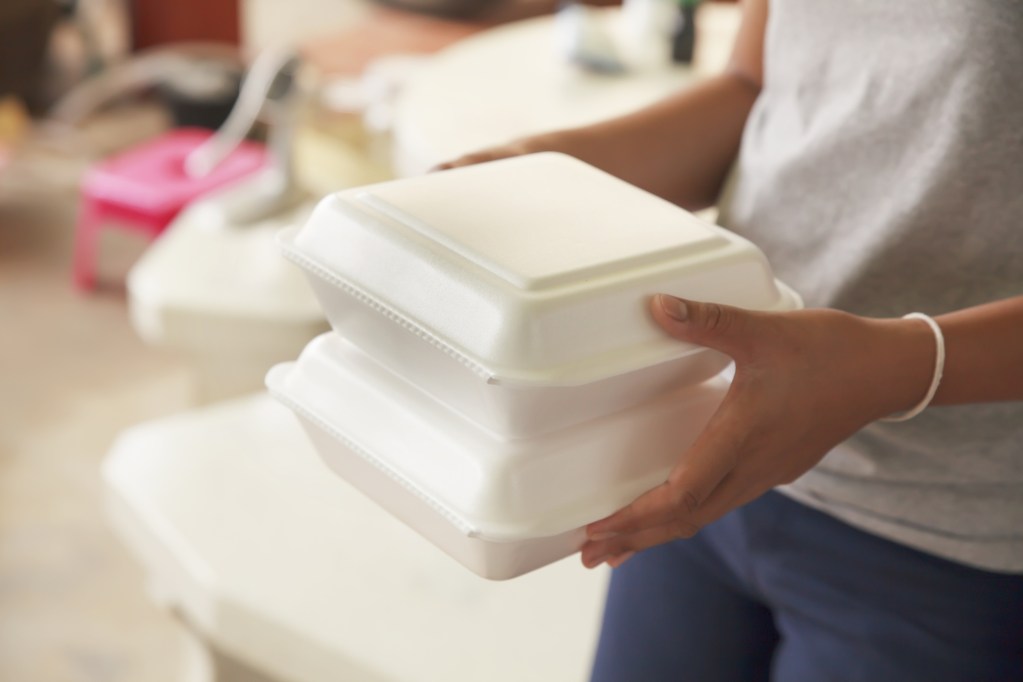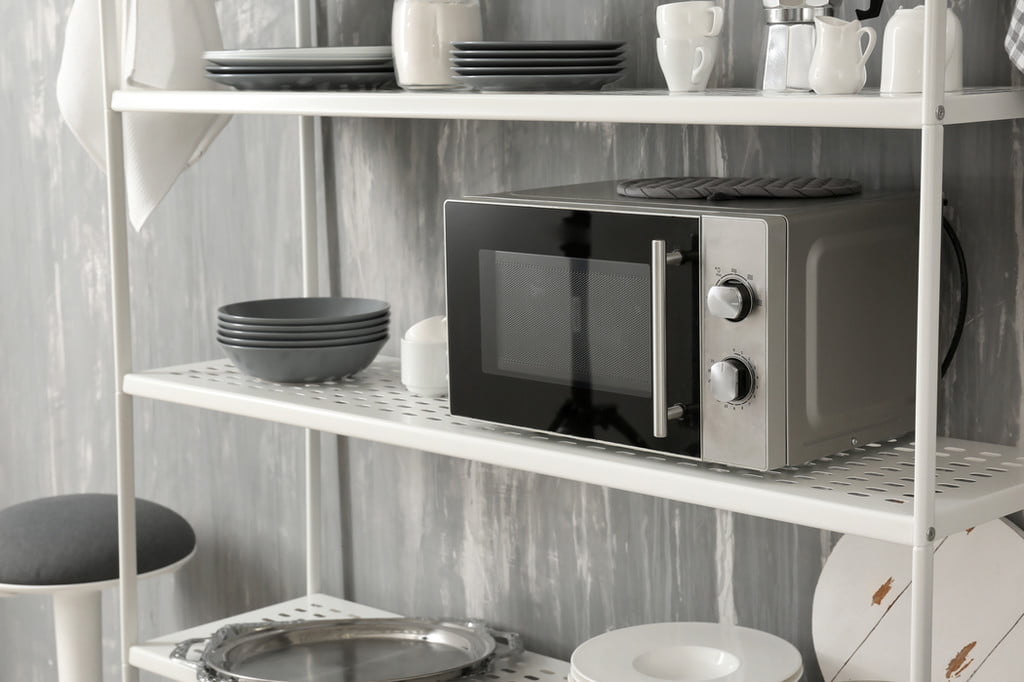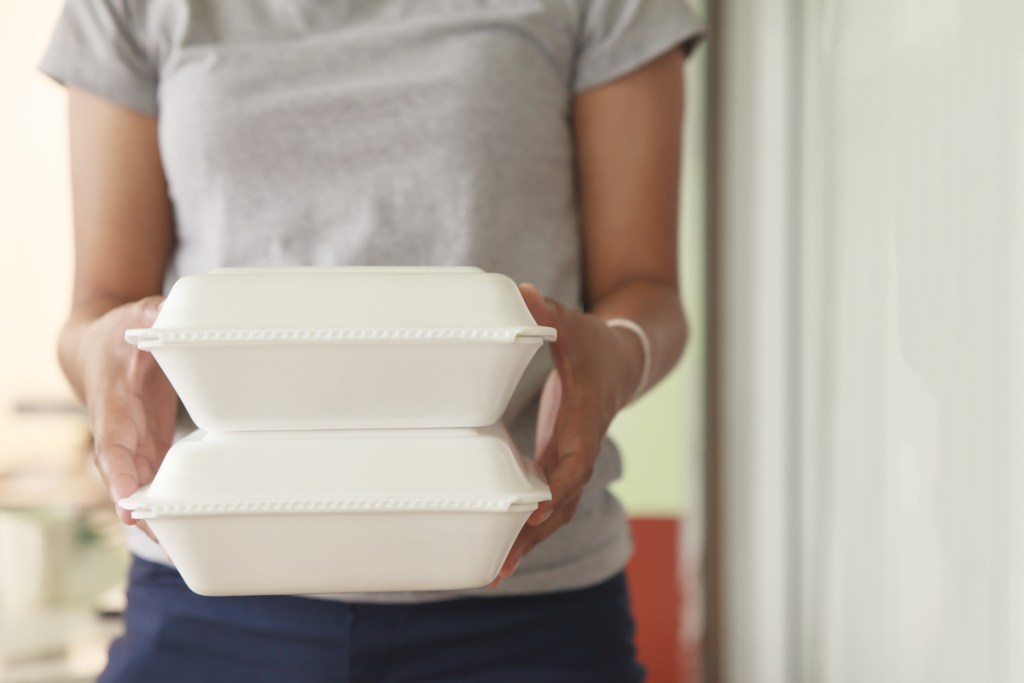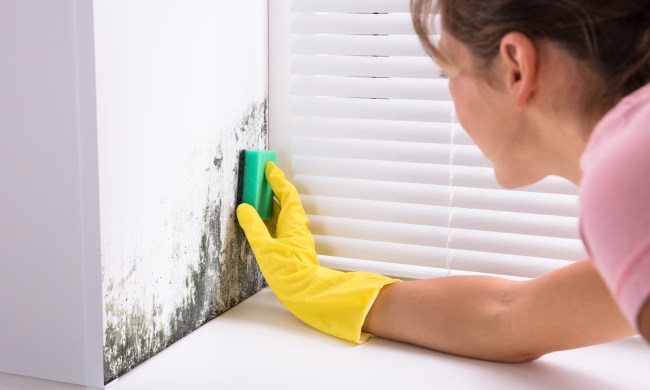Sure, you may love to cook delicious, gourmet meals that your friends and family salivate over, but sometimes, throwing something in the microwave is just easier. Whether you’re heating up yesterday’s leftovers or reheating lukewarm takeout, the microwave can be the busy homeowner’s best friend. But do you need to take the food out of that convenient Styrofoam container first? Can you heat up Styrofoam, or is it unsafe to do so?
Can you heat up Styrofoam? What’s safe and what’s not

Microwaves are easy to use, but that doesn’t mean every type of food container belongs in them. In fact, most Styrofoam food containers should not be microwaved or heated due to their tendency to melt and transfer toxic chemicals to your food when heated.
So, which materials are safe for reheating food? Depending on what container your food is in, you may need to transport it to a microwave-safe container. Here are some do’s and don’ts:
- Don’t microwave metal: Metal-based materials can’t go in the microwave since the waves can’t penetrate metal. These containers are better suited for reheating in the oven.
- Do microwave glass and ceramic: With a few exceptions, most glass and ceramic dishes are microwave-safe containers and can typically be used in the oven as well.
- Possibly microwave plastic forms of Tupperware: As with glass and ceramic, you may be able to microwave some plastics that are labeled as safe. However, plastic is not safe to heat in an oven’s high temperatures.
- Possibly microwave paper plates and cardboard containers: Most paper plates and food containers made from paper or cardboard products are safe in the microwave, but only if they are not coated with thin layers of plastic or foam. But you definitely shouldn’t heat these in the oven. The high temps can cause these materials to start on fire.
Styrofoam is such a commonly used food container, but is it safe to heat? The answer is typically no, but it’s complicated. Keep reading to find out more about the dangers of putting your Styrofoam bowls, cups, or plates in the microwave.
What is Styrofoam?

Trademarked by The Dow Chemical Company, the term ‘Styrofoam’ actually refers to a type of polystyrene foam commonly used in the building industry. Over the years, the term has often been misused when referring to an expanded polystyrene foam that’s injected into molds to make disposable plates, cups, and takeout containers.
Polystyrene containers are cheap to manufacture and are excellent at keeping foods and beverages warm, making them a popular choice in the food industry. But over the past several years, there has been a growing backlash against single-use polystyrene containers due to environmental and potential health concerns. Indeed, many states, cities, and local governments have banned the use of polystyrene in recent years.
It can take about 50 years for a Styrofoam coffee cup to decompose; sadly, Styrofoam and other plastics make up about 30% of all landfill volume in the U.S.
From a health perspective, Styrofoam-based products contain a compound called styrene, which has been linked to cancers in animal and human studies. There is an increased risk of styrene leaking into foods when containers are microwaved. This is especially true for fatty foods.
Can you safely microwave or heat Styrofoam cups or other food containers?

Food-use Styrofoam containers, made from expanded polystyrene, are not oven safe. These Styrofoam containers will begin to soften at 212 degrees Fahrenheit and actually melt at 464 degrees. They are safe to use for storing food in the refrigerator, but never to cook or reheat in the oven.
The FDA regulates plastic and polystyrene containers, cups, and plates and tests their safety and use in microwave ovens, making sure that the amount of chemicals that leach out isn’t higher than 100 to 1,000 times lower than the amount that has proven to hurt lab animals. Any container that achieves that can be outfitted with a microwave-safe label indicating they have been tested for safety in the microwave. Look for the microwave-safe labeling on any Styrofoam containers before putting them into the microwave.
Is it even safe to put hot food in Styrofoam?

When it comes to piping hot foods, we recommend avoiding Styrofoam altogether. If the food is fresh out of the oven or immediately coming out of the microwave after reheating, it can start to melt the Styrofoam material a bit. This will still lead to harmful chemicals leaching into your food, which you may ingest in small quantities.
Additionally, the heat can weaken the structure of the container, increasing the likelihood of leaks or spills while you’re eating. To avoid health concerns and other mishaps, it’s best to serve hot food on glass, ceramic, or BPA-free plastic containers designed for heat resistance.
What are Styrofoam alternatives?

To reduce landfill items and to ensure what you are reheating is safe, glass and ceramic are generally safe for microwave use. Sure, it’s not as convenient as taking your food straight from the fridge in the Styrofoam container, but knowing you aren’t putting any harsh or unsafe chemicals into your body is worth the extra step.
A few more things regarding microwave reheating and safety

- If you can’t verify that your Styrofoam container is microwave safe, transfer the food to a glass or ceramic container labeled microwave safe.
- If you want to cover foods while reheating in the microwave, use wax paper, parchment, or even paper towels. Don’t allow plastic wrap to contact food while microwaving, as it may melt during heating.
- Those plastic tubs that hold yogurt, cream cheese, mayonnaise, and other foods may be tempting to use as extra food storage in the fridge, but they aren’t microwave-safe containers.
- Any plastic containers that are cracked, scratched, or microwaved many times can begin to leach harmful plastic into your food.
- If you aren’t sure if you have a microwave-safe container, you can always transfer the food to a pot or pan and reheat it on the stove or in the oven.
Microwaves and Styrofoam containers are products born out of modern needs for convenience but are they safe together? As a general rule, if you are unsure of your food containers’ microwave safety, don’t use them. But by being diligent, reading labels, and following the tips above, you’ll be able to enjoy the convenience of microwave heating while still keeping you and your family safe.




